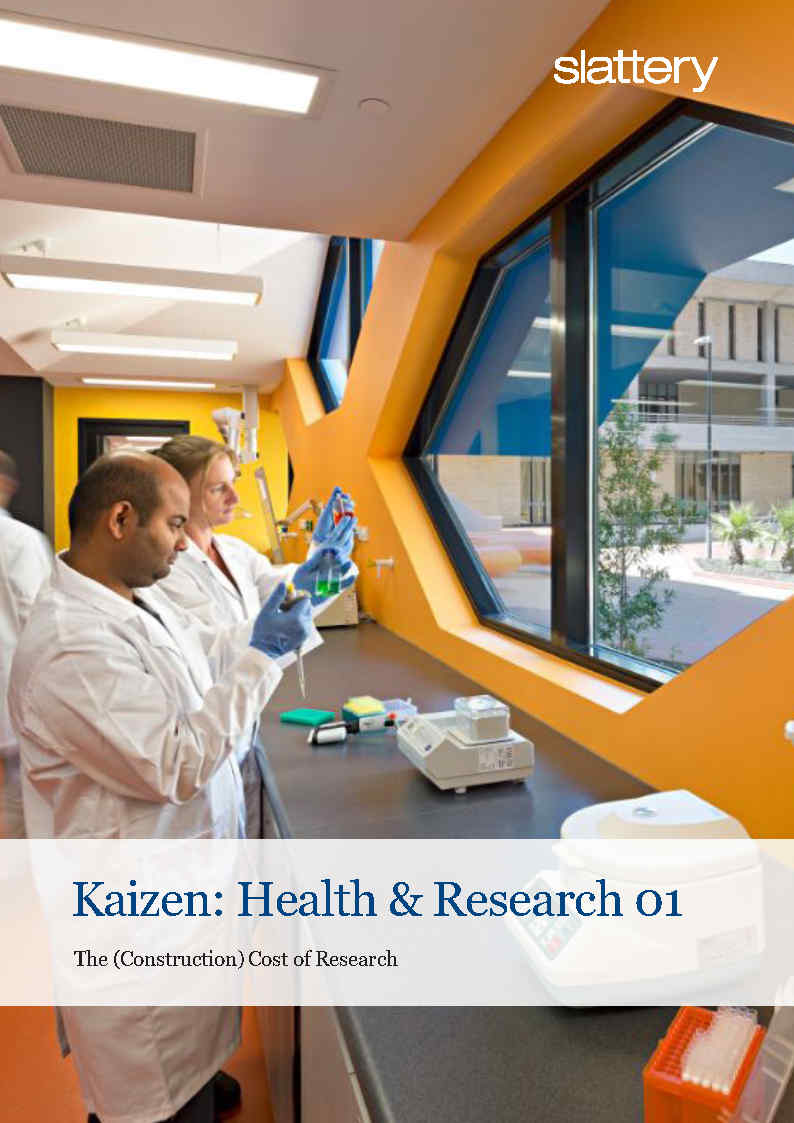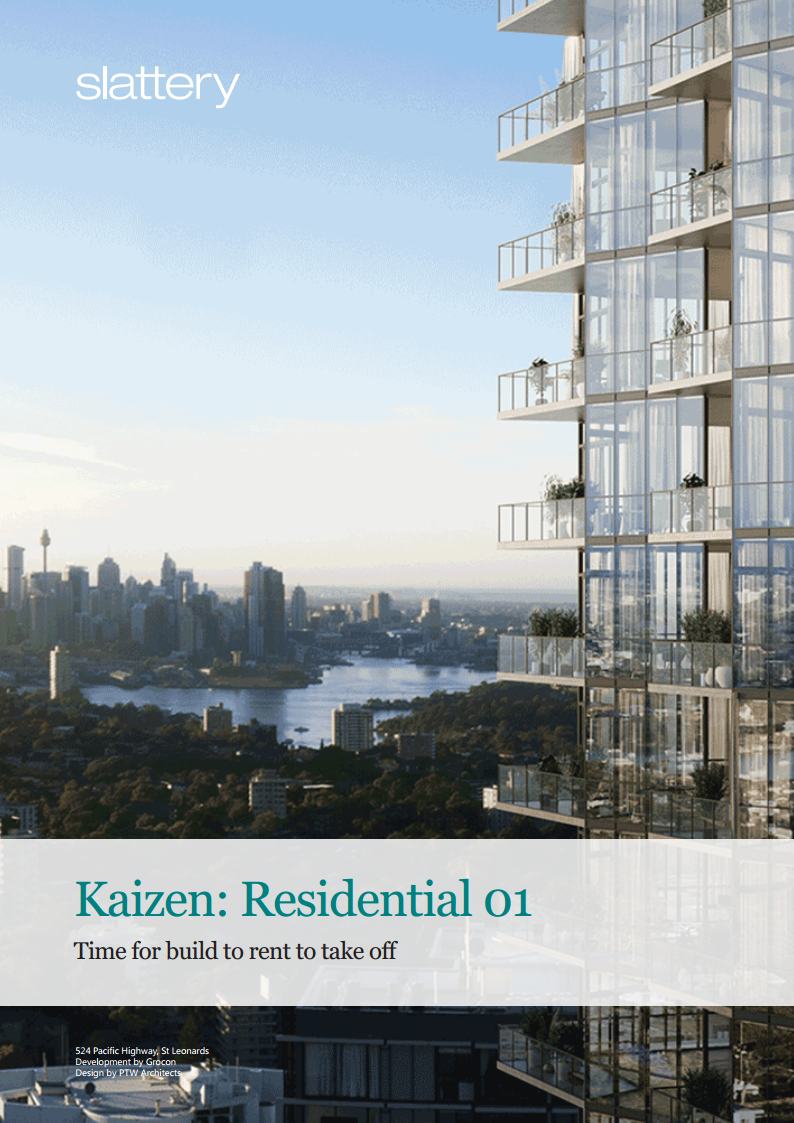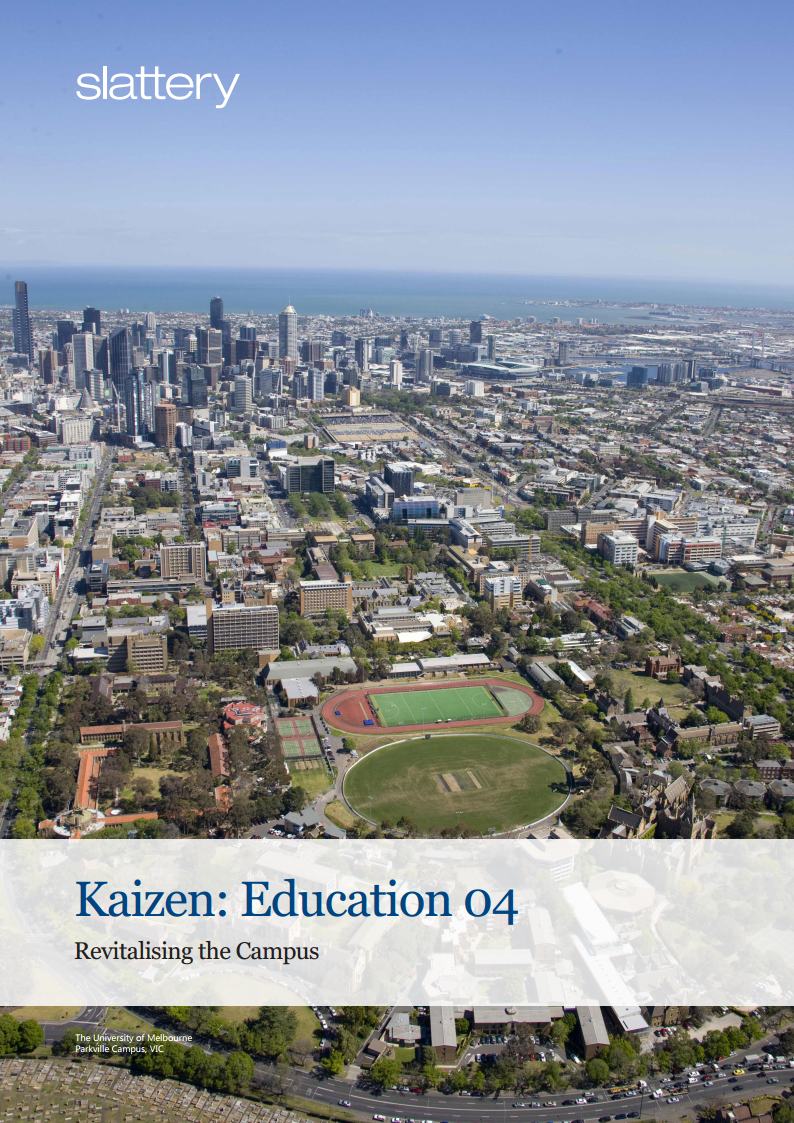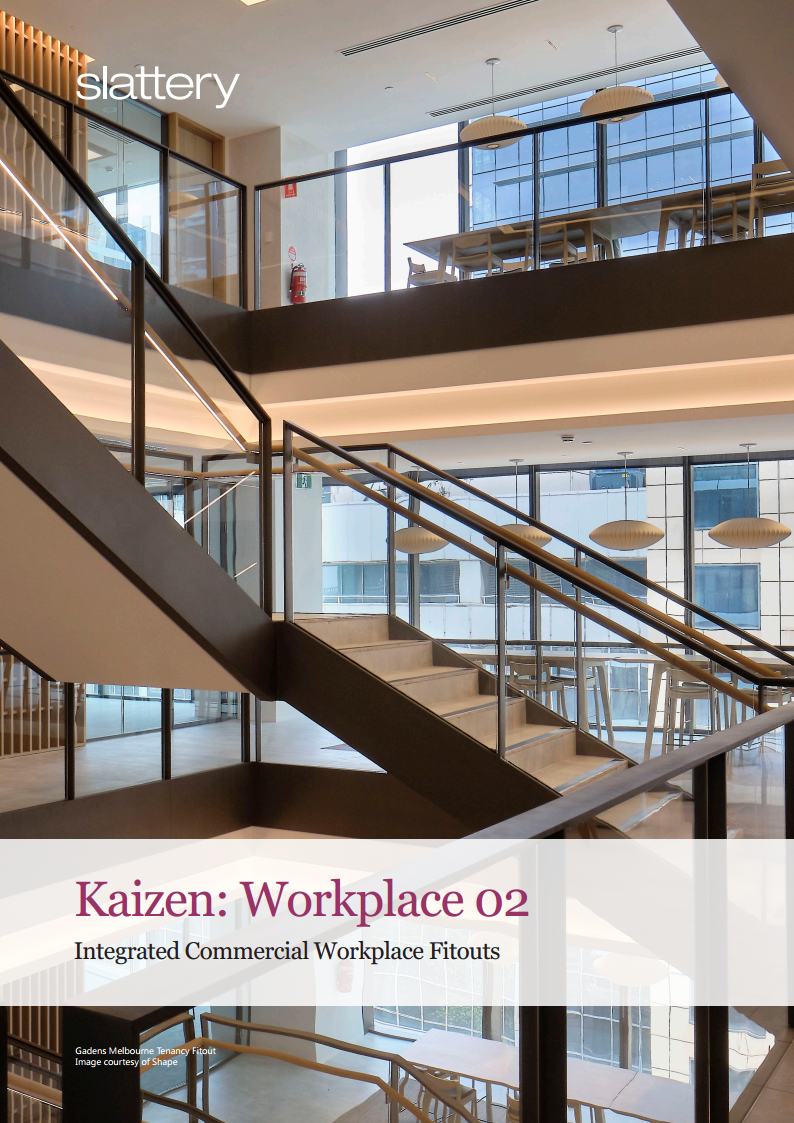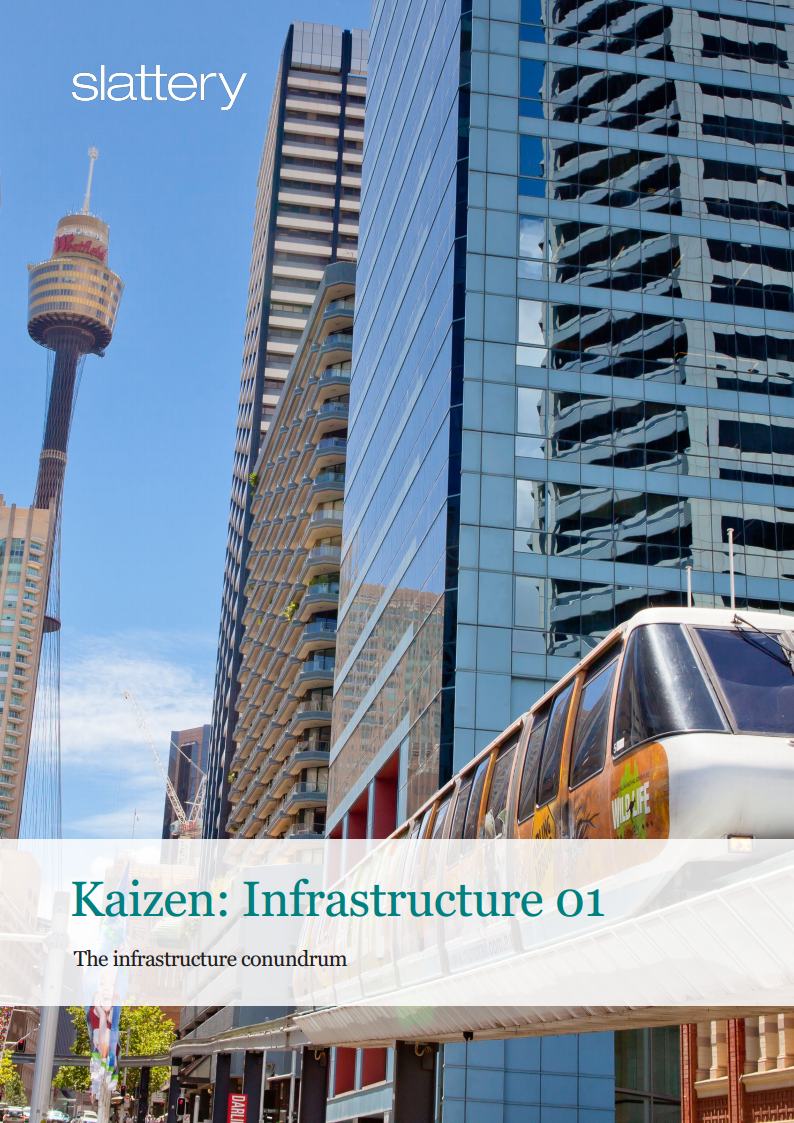Kaizen Papers
The (Construction) Cost of Research
Despite the disruption Covid-19 has created for all global industries, it is apparent that government expenditure in innovation, health and research will play a pivotal role in social and economic recovery. As such, universities and research bodies are moving swiftly to enhance their research capabilities. In our latest Kaizen paper, Slattery unpacks the cost considerations in constructing research laboratories, as well as the steps to implement to mitigate cost risk.
Time for Build to Rent to Take Off
Over the last few years, Build to Rent has become a topic of increasing interest in the global property industry. However, despite significant popularity in Europe and The US, it is no secret that this asset class has struggled to gain traction in the Australian market. In Slattery’s newest Kaizen paper, our residential team investigates how practical and cost-effective design can facilitate a domestic build to rent take off.
Revitalising the Campus
The forefront of innovation in Australia, the tertiary education sector is constantly evolving and growing, necessitating the incessant redevelopment, refurbishment and expansion of existing campuses. Unsurprisingly, these projects present a number of challenges to universities and developers, some of which can seem insurmountable without early and accurate planning. In our latest Kaizen paper, Slattery apply our experience in the successful delivery of brownfield redevelopments to identify the key issues; which when considered early best position tertiary providers to achieve optimal environmental, health & safety, and economic outcomes.
Integrated Commercial Workplace Fitouts
Slattery’s extensive workplace interiors portfolio means we have experience assisting clients in the various methods of fitout delivery and have developed insight into the complexities associated with each type. In this Kaizen, we explore the critical issues and risks that can arise for tenants in delivering an integrated fit out and the opportunities and mitigation measures available to manage these risks.
Evolving culture, chasing dreams: Cost considerations for new cultural infrastructure
Governments are recognising the value of culture and cultural diversity, not just in cities but in regional and rural communities across Australia. Impacting wellbeing and local economies, its effect is transformative. Australian cultural industries now contribute over $50 billion a year in economic activity with cultural tourism an important part of this contribution. Culture is what differentiates cities and communities, contributing to place-making and self-development through engagement with arts and culture; ultimately benefiting communities and developers in both city and country areas. Culture underwrites the appeal of any community. What are the costs and the benefits of investment in cultural infrastructure?
The infrastructure conundrum
Two thirds of Australians now live in our capital cities, and the growth of our urban nation continues to accelerate at an ever-increasing rate. According to Infrastructure Australia, the percentage of city dwellers will rise from 69.3 per cent in 2031 to 73.4 per cent by 2061. By then, up to 15.7 million Australians will live in our capital cities. Accommodating this growth will be one of the great challenges of our nation’s city-builders in the decades to come. Read our recent article “The Infrastructure Conundrum” by Director Gillian Cottle and let us know your thoughts on how we will meet the infrastructure needs of this population growth.
